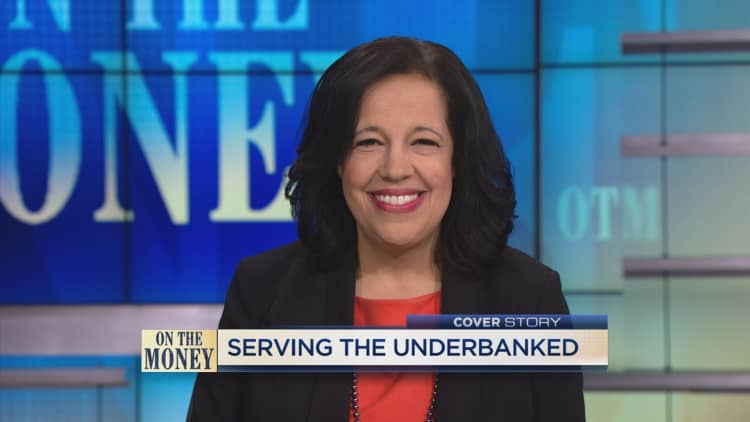
After two fires in her homes in the Mississippi Delta, Farrah Appleberry and her four daughters were left destitute and in bankruptcy.
But there was hope – literally.
Hope Credit Union, focused on economically distressed areas in the South, brings basic banking services to the nation's poorest.
Twenty-five percent of U.S. households are unbanked or underbanked, according to a 2017 survey by the Federal Deposit Insurance Corp. Those are people who either don't have a bank account, or have an account, but still use financial services outside the banking system like payday loans to make ends meet.
Why are the numbers so high?
More than half of unbanked households cited not having enough money to keep in an account, 30 percent said they don't trust banks and 9 percent reported banks are in an inconvenient location, according to the survey.
A lack of access to banks continues to worsen as more and more branches close.
Between 2014 and 2018, 1,915 more branches in lower-income areas closed than were opened, according to data from S&P Global.
In February, Federal Reserve Chairman Jerome Powell made a historic visit to the Mississippi Delta, speaking with students at Mississippi Valley State University and delivering remarks at a conference to shine a light on the problem of the unbanked.
"Access to safe and affordable financial services is vital, especially among families with limited wealth, whether they are looking to invest in education, start a business, or simply manage the ups and downs of life," Powell said.
For Appleberry, the credit counseling provided by Hope means she should exit bankruptcy by November.
"Once I get out of bankruptcy, it may not be the biggest account, but I'm looking to have enough money in Hope, if I have a dry day, me and my girls will still make it. I have to learn to save small to get to big."
Hope Credit Union is part of Hope Enterprise and is considered a community development financial institution. There are nearly 1,200 CDFIs across the country that are on a mission to help low-income communities.
And organizations like the Opportunity Finance Network help connect public and private funding to CDFIs.
"Our job is to help those credit unions and loan funds and community banks do more, help more people so they can move on with their lives," Lisa Mensah, CEO of the Opportunity Finance Network, told CNBC's "On the Money" in an interview.
She added: "The good part about working with CDFIs – is that CDFIs help the people get on with their lives but they also help the places rise. You also need to not just transact, but to get ready for a mortgage, to help send kids to school, and to do the things that help you move into the middle class, and that's where these mission oriented loan funds, or banks or credit unions are very strong."
Mensah says while CDFIs are mission oriented, they do make money as well.
"We are profitable, but we are not profit maximizing, we seek to maximize impacts, so we help more people get jobs, more people move into mortgages, but we are profitable."



